|
Hellooooooooo!! Hoooooooowwwwwwwzit? Not soooo Bad? I'm a editor of the Shroom (Just a little. I'm signing up for Fake Games.)
Go to my PM wiki and please help me with it it! This one to! -->:)<--
<font:Big> Do ya wanna know who's hea? Go over ther ---> Who's online: Nintendo101, Yourpalado, Feranogame, MaxTaylor08, Setta3434, Mario, Apikachu68, Morgan KP, Bowserbros, BMfan08, CaXaP, Weej, Zaku, P-Tux7, Your Iron Lung, Keegster2, RickTommy, Spencer PK, Mariofan12ify, Blhte, Polley001, Pdizzle, Super Mario RPG, Irving Snordfelt, Have A Rotten Day!, Wilben, IN CHINS, LittleLum, MarioComix, RHG1951, Shtunky48, Zootalo, CrookedTree59, DesaMatt, Fou-mage, Natnew PLEASE GO IN THE LICENCE BOX AND LEVEL UP MY CARD (MKWii and Brawl)
Click this to skip my videogames
My >Mario< Videogames
I did a method similar to Grandy02's.
I havent put things on all of them, only the first 2
| Name
|
Description
|
Mario Party 8
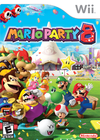
|
Mario Party 8 is the eighth installment of the Mario Party Series on a home console, and the first Mario Party game for the Nintendo Wii. The game is more notable than its prequels for its strong use of the Wii Remote in minigames.
|
Mario Kart Wii

|
Mario Kart Wii is the latest installment of the Mario Kart series. A Wii Wheel, designed from the ground up for the Wii, is included in the package because Nintendo aimed that it would make it a more realistic steering experience. It is, however, compatible with other controllers as well. It features many classic Mario Kart characters as well as several new ones.
|
Super Mario Galaxy
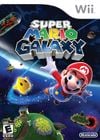
|
Super Mario Galaxy is the latest of Mario's 3-D platformers, and the follow-up to Super Mario 64 and Super Mario Sunshine. However, unlike the previous two 3D adventure installments for the Mario series, this game takes place in deep space. Most of the game's levels consist of many small planets and planetoids, while others have bigger planets.
|
New Super Mario Bros. Wii
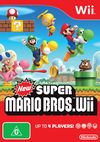
|
New Super Mario Bros. Wii is a sidescrolling Mario game for the Wii, and has been released in Australia on November 12; in America on November 15, and Europe on November 20 of the year 2009. It is the follow-up to New Super Mario Bros., a 2006 game released for the Nintendo DS. In addition to the single-player experience, the game also features a multiplayer mode for up to four players. It features more items, new levels and more enemies than the DS predecessor. It's also the first title to support Nintendo's new Super Guide mode.
|
Mario Power Tennis
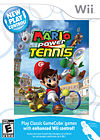
|
For the Nintendo Wii version of Mario Power Tennis (via the New Play Control! lineup), the controls are not like the Nintendo Gamecube version, since the game makes use of the Wii's motion controls. This version includes a tutorial movie to demonstrate how to use the Wii Remote in this game. It is also possible to play this game in 16:9 widescreen mode. Players can choose to play with the Wii Remote only, or with the Wii Remote/Nunchuck combination for advanced control of playable character participants.
|
Mario and Sonic at the Olympic Winter Games
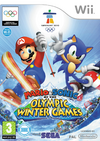
|
Mario & Sonic at the Olympic Winter Games is a sports game for the Wii and Nintendo DS, and is the follow-up to Mario & Sonic at the Olympic Games. The game is produced under license from the International Olympic Committee in relation to the Olympic Winter Games taking place at Vancouver in 2010.
|
Super Paper Mario
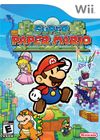
|
Super Paper Mario is an RPG-type platformer for the Wii, in the vein of the classic Mario titles, but with the aesthetic qualities of the Paper Mario series. The game takes place in a strange 2D dimension. However, it's not just a 2D side-scroller. The game fuses elements of 2D and 3D gameplay together, shifting back and forth between dimensions. As Nintendo Power magazine describes it, the game is the first "2.5D" sidescrolling video game.
|
| Name
|
Description
|
Mario vs Donkey Kong 2: March of the Minis
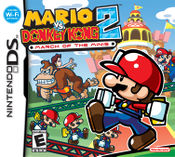
|
Mario vs. Donkey Kong 2: March of the Minis is a puzzle game and the sequel to Mario vs. Donkey Kong. The game is for the Nintendo DS, and the prequel to Mario vs. Donkey Kong 3: Minis March Again!. It was released on September 25, 2006.
|
Mario and Sonic at the Olympic Games
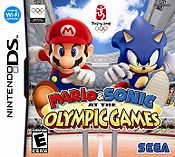
|
Mario & Sonic at the Olympic Games is a sports game that places Mario, Sonic, and their various allies against each other in Olympic events. The game has the official Beijing 2008 Olympics license, and features environments based on actual Olympic venues.
|
New Super Mario Bros.
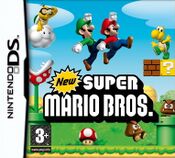
|
New Super Mario Bros. is a side-scrolling platformer game exclusive to the Nintendo DS, starring Mario and Luigi. The game features a solo story mode with Mario or Luigi, a two-player wireless game Mario vs. Luigi, as well as a mini-game mode for up to four players. And players can access Luigi as a story mode (1 player) character if they press L and R and select a file at the same time. The multiplayer games support both single-card and multi-card play. The mini-games are mostly the same as those featured in Super Mario 64 DS, with the difference that they do not need to be unlocked here. The game received a sequel, which is New Super Mario Bros. Wii.
|
Super Mario 64 DS
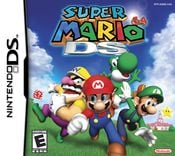
|
Super Mario 64 DS (originally called Super Mario 64 x 4[1]) is a game from the Super Mario series made for the handheld game system Nintendo DS. The game is a remake of Super Mario 64 for the Nintendo 64, bearing some new features on its storyline, gameplay and graphics. Unlike Super Mario 64, Mario is not the only playable character; Yoshi, Luigi and Wario enjoy to the adventure in order to rescue Princess Peach from the hands of Bowser. Other new features within include a multi-player mode, where up to four players can play simultaneously on each Nintendo DS connected together locally; mini-games to play on each hero, and new additions to the story mode such as new missions and levels.
|
Mario and Luigi: Partners in Time
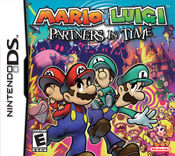
|
First unveiled at E3 2005 as Mario & Luigi 2, Mario & Luigi: Partners in Time, was a critical success from the start. Scoring highly on its reviews, the game was loved primarily for its creative, innovative gameplay carried over and revamped from Mario & Luigi: Superstar Saga, and for its great use of the "dual- screened" aspect of the Nintendo DS. Several issues people took with the game were its repetitive and seemingly level-based gameplay. One of the most liked aspects of Superstar Saga was its free-roaming overworld, something limited to Princess Peach's Castle in this game.
|
Mario Hoops 3-on-3
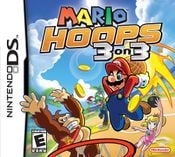
|
Mario Hoops 3-on-3 (also known as Mario Basketball 3 on 3 in Japan and as Mario Slam Basketball in Europe) is a Mario sports game developed by Square Enix for the Nintendo DS. This time around, Mario and his friends are playing basketball.
|
Mario Kart DS

|
Mario Kart DS is a game for the Nintendo DS developed and published by Nintendo. It is the seventh title created for the Mario Kart series, featuring for first time an online multiplayer mode employing the Nintendo Wi-Fi Connection service, as well as including a mission mode. It also features a map that displays the objects and characters present throughout the courses, making use of the DS' bottom screen.
|
Mario Party DS
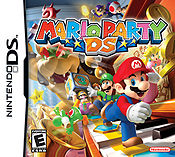
|
Mario Party DS is the eleventh installment in the Mario Party series (thirteenth in Japan) and was released in Japan on November 8, 2007, in the United States on November 19, 2007, in Europe on November 23, 2007, and in Australia on December 6, 2007. It includes more than seventy new minigames and five new game boards. Its functions include touch control, microphone control and dual-screen challenges. It is possible for up to four players to play in wireless mode.
|
Yoshi's Island DS
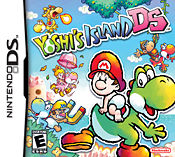
|
Yoshi's Island DS is the direct sequel of Super Mario World 2: Yoshi's Island; it is also the indirect sequel to Yoshi's Story. This game has fewer levels, but has updated graphics, new babies (in addition to the classic babies), and a whole new adventure. The graphics still retain the trademark "pen and pencil" style of the original.
|
| Name
|
Description
|
Super Mario Sunshine
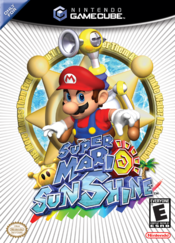
|
MSuper Mario Sunshine is a Mario platformer released on July 19, 2002. It is for the Nintendo GameCube and is the sequel of Super Mario 64. It was the first main Mario series title not to be a launch title for its respective console, a trend that was followed with Super Mario Galaxy on the Wii. The 120 total Shine Sprites in this game is the same number of total Power Stars in Super Mario 64.
|
| Name
|
Description
|
Super Mario Advance
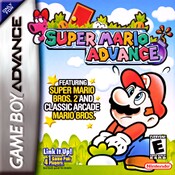
|
Super Mario Advance features the classic game Super Mario Bros. 2, basing it heavily off of the Super Mario All-Stars port of the game, although in the game it is referred to as Super Mario 2.
|
Super Mario Advance 2
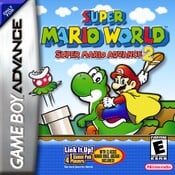
|
As the name suggests, Super Mario World: Super Mario Advance 2 features Super Mario World. It was the second video game in the Super Mario Advance series, and was released for the Game Boy Advance in 2001.
|
Super Mario Advance 3
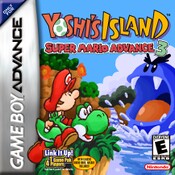
|
Yoshi's Island: Super Mario Advance 3, released in 2002, is a remake of Super Mario World 2: Yoshi's Island for the Game Boy Advance. It is very much like the Super Nintendo version, yet this newer version has improved sprites, levels and sound effects.
|
Super Mario Advance 4
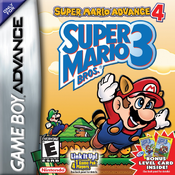
|
In 2003, the fourth and final entry in the Super Mario Advance series, Super Mario Advance 4: Super Mario Bros. 3 was released for the Game Boy Advance. It was actually a heavily updated version of Super Mario Bros. 3 as the name suggests. However, it boasted similar graphics and sound to the All-Stars version. It features a save system similar to the Super Mario All-Stars save system, except temporary saves may now be done anywhere.
This game's largest added feature was compatibility with the e-Reader and e-Cards. These cards could be scanned in to the game, and would function as new levels, instant power-ups, or demos. One power-up card features a power-up that cannot be found in any other Mario game: the Boomerang.
|
Mario Kart: Super Circuit
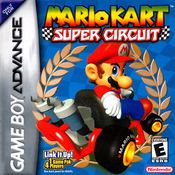
|
Mario Kart: Super Circuit is the third game in the Mario Kart series for the Game Boy Advance. The game is known under the name Mario Kart Advance in Japan. This game combines the elements from the previous Mario Kart games and contains all of the courses from Super Mario Kart.
|
Mario Tennis: Power Tour

|
Mario Power Tennis (also known as Mario Tennis: Power Tour in North America) is the Game Boy Advance counterpart of Mario Power Tennis for the GameCube. It is very similar to Mario Tennis in gameplay and plot, though it has the addition of Power Shots. Though it is the counterpart of Mario Power Tennis, the two games cannot be connected in any way.
|
Mario & Luigi: Superstar Saga
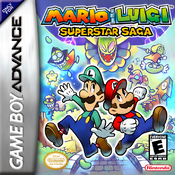
|
Mario & Luigi: Superstar Saga (Japan: Mario & Luigi RPG) was the first game in the Mario and Luigi Series and was released in 2003 for the Game Boy Advance. It was an RPG starring the famous Mario Bros., Mario and Luigi. Unlike most Mario games, Superstar Saga took place in the Beanbean Kingdom. A sequel, Mario & Luigi: Partners in Time, was released for the Nintendo DS in 2005, which was followed by another for the Nintendo DS, Mario & Luigi: Bowser's Inside Story, in 2009.
|
| Name
|
Description
|
Super Mario Bros. Deluxe
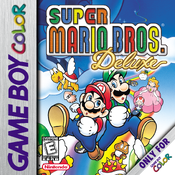
|
Super Mario Bros. Deluxe, released on the Game Boy Color in May of 1999, was a remake of the 1985 Super Mario Bros. and 1986 Super Mario Bros.: The Lost Levels games. It was released fourteen years after the original Super Mario Bros..
|
| Name
|
Description
|
Paper Mario
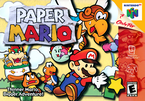
|
Paper Mario, known as Mario Story (マリオストーリー Mario Sutōrī) in Japan, is a video game for the Nintendo 64 released in 2000. This game was released for Virtual Console on July 16, 2007 in America. It was also originally in development for the Nintendo 64DD.
|
Super Mario 64
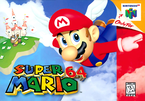
|
Super Mario 64 is a 3-D platformer game for the Nintendo 64. It was first released in Japan on June 23, 1996; in the U.S. on September 29, 1996; in Europe on March 1, 1997; and in Australia on March 1, 1997. This game was one of two launch titles for the Nintendo 64, along with Pilotwings 64, which helped drive initial sales of the console. To date, it has sold over 11 million copies, and is the second most popular game on the Virtual Console. The game is actually the second three dimensional game starring Mario, the first being Mario Clash.
|
Super Smash Bros.
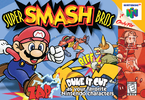
|
Super Smash Bros. is a fighting game for the Nintendo 64 created by Nintendo and HAL. It was commercially successful, and had two sequels: Super Smash Bros. Melee, and Super Smash Bros. Brawl. All the fighters are famous Nintendo characters from the company's various franchises. Players must defeat their opponents multiple times in a fighting frenzy of items, power-ups, an original health system, in unique, Nintendo-themed stages.
|
Mario Kart 64
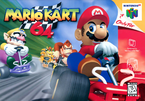
|
Mario Kart 64 is the second installment of the Mario Kart series, as well as the first in the series to use three-dimensional graphics. It was released for the Nintendo 64, and later became available for the Wii's Virtual Console.
Mario Kart 64 has set many trends which have continued on in the Mario Kart series, and introduced courses such as Sherbet Land and Wario Stadium that were used again in future Mario Kart installments.
|
Mario Golf

|
Mario Golf is a video game for the Nintendo 64 released by Nintendo in 1999. It was developed by Camelot Software Planning.
Though several sports games featured Mario characters in the past, Mario Golf is considered the first game in the modern "Mario Sports" line. It would be followed by several titles encompassing a variety of sports.
|
Mario Party
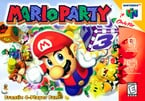
|
Mario Party is a video game based on a board game, and the first of the expansive Mario Party series. Players choose one of six characters and move around the board. As they go around, they collect coins and various other items that can help them or hinder others in their quest to collect Stars.
|
Mario Party 2
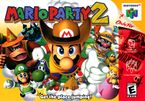
|
Mario Party 2 is the sequel for the original Mario Party. Mario and the gang are fighting for the rights for a new amusement park, and whoever defeats Bowser gets the place named after him/her.
|
Mario Party 3
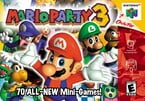
|
Mario Party 3 is the third installment of the popular Mario Party series. The game is centered around the Millennium Star, who replaces Toad as the host. Mario Party 3 has 70 all new mini-games, and players can now hold up to three items. It also offers a special twist to the game unique in the Mario Party series: duel boards, where two players fight each other using partners.
|
Mario Tennis
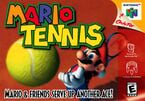
|
Mario Tennis is a Nintendo 64 video game. It features Mario and his friends playing tennis. It was originally going to be called Mario's Dream Tennis, but was changed for unknown reasons. This game marked the debut of Waluigi, and also Princess Daisy and Birdo's re-entries into the Mario series. The Game Boy Color counterpart is Transfer Pak compatible with Mario Tennis.
|
| Name
|
Description
|
Super Mario World
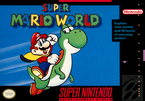
|
Super Mario World (originally known in Japan as Super Mario Bros. 4: Super Mario World) was the first Mario launch game for the Super Nintendo Entertainment System, November 21, 1990. The game was produced by Shigeru Miyamoto, the music was composed by Koji Kondo, and the graphics were designed by Shigefumi Hino. This game was playable in the SNES and the Super Famicom. Super Mario World is an unlockable masterpiece in Super Smash Bros. Brawl. To unlock, one must play in the Yoshi's Island stage more than three times.
|
Super Mario All Stars
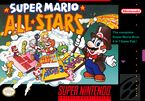
|
Super Mario All-Stars (known as Super Mario Collection in Japan) is a compilation of remakes for the Super Nintendo. It ports Super Mario Bros., Super Mario Bros. 2, Super Mario Bros. 3 and Super Mario Bros.: The Lost Levels to the Super Nintendo with an added on-cartridge save feature, updated graphics and sound, and an additional "battle game" for Super Mario Bros. 3. It is the first time that Super Mario Bros.: The Lost Levels was released for the western public.
|
Donkey Kong Country
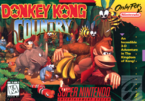
|
Donkey Kong Country (Super Donkey Kong in Japan) is a game for the Super Nintendo Entertainment System, and was released in 1994. The game is known for being the first game to use pre-rendered sprites, creating a 3D effect throughout the game.
|
Super Mario RPG: Legend of the Seven Stars
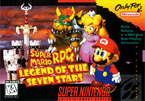
|
Super Mario RPG: Legend of the Seven Stars (known simply as Super Mario RPG in Japan) is a role playing video game designed by Squaresoft (currently Square Enix) and released for the Super Nintendo in 1996. It was the first Mario role-playing game, and worked out fairly well with an action-command battle system. In this game, Mario, with the help of four other characters, needs to stop a new enemy, Smithy, while collecting seven Star Pieces so that peace may return and wishes may be granted once more.
|
Super Mario World 2: Yoshi's Island

|
Super Mario World 2: Yoshi's Island is the first game to star Yoshi, and the first game chronologically in the entire Mario series. The game was later re-released for the Game Boy Advance under the title Super Mario Advance 3: Yoshi's Island.
|
Mario is Missing!

|
Mario is Missing! is an edutainment game created for the NES, Super NES, and for DOS. The gameplay was widely panned by critics, although its Super Mario World music remixes are recognized. Mario is Missing! was released on MS-DOS in 1992, and the console versions came out the following year. A sequel called Mario's Time Machine was eventually produced.
|
Mario Paint
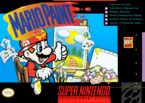
|
Mario Paint is a singular title on the Super Nintendo, supporting the little-known SNES Mouse peripheral in creating art on the 16-bit machine.
|
Super Mario Kart
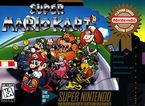
|
Super Mario Kart is a racing game for the Super Nintendo Entertainment System released in 1992 and re-released in 1996 as the Player's Choice. It is also released in Japan on June 9, 2009 and in United States on November 23, 2009 as a Virtual Console, but as of yet it hasn't been released on VC in the Europe or Australia. It was the first game in the Mario Kart series, and the game that popularized the kart racing style of video game. It spawned many imitators that tried to emulate the Mario Kart formula of simple, fast-paced racing with a focus on traps and items, such as Sonic Riders or Crash Tag Team Racing, but none have been as successful as the Mario Kart series.
|
Mario's Time Machine
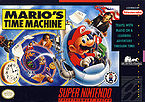
|
Mario's Time Machine is an edutainment title that was released for the SNES and PC in December 1993; it was later released on the NES in 1994. It is usually meant to teach younger players basic world history. It is worthy to note that this is the only game in the Mario series in which Mario as a protagonist has full lines of dialogue.
|
| Name
|
Description
|
Dr. Mario
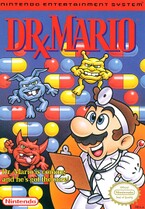
|
Dr. Mario is an arcade-style puzzle video game created by Nintendo, and was released for the Nintendo Entertainment System (NES) and Game Boy in 1990. It was ported into the Nintendo Playchoice-10 arcade machines in North America. In 2004, Nintendo re-released the original Dr. Mario for the Game Boy Advance, as part of the Classic NES Series. In 2005, Nintendo again released Dr. Mario for Game Boy Advance, but this time as an enhanced remake in Dr. Mario & Puzzle League. Dr. Mario's gameplay is very similar to that of Tetris. Like Tetris, the player had to line pills up to destroy viruses. WarioWare one also had Dr. Mario as a Microgame and a unlockable clone of Dr. Mario called Dr. Wario.
|
Super Mario Bros.
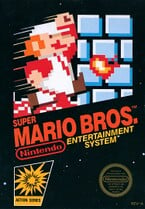
|
Super Mario Bros. (known as Super Mario in Super Mario All-Stars, Japanese スーパーマリオブラザーズ Super Mario Brothers) is the semi-sequel to Mario Bros., a game which was released for the Famicom on September 13, 1985, and on the Nintendo Entertainment System in North America in late 1985 or 1986. This is the first game to be set explicitly in the Mushroom Kingdom, marking the first appearances of Bowser and Princess Toadstool, as well as Koopa Troopas, Goombas and many other Mario series enemies. Super Mario Bros. is the best selling video game of all time until recently when it was surpassed by Wii Sports., and was largely responsible for the initial success of the Nintendo Entertainment System. As of 2003, the game has sold more than 40.23 million copies worldwide, making it the second best selling video game of all time.
|
Super Mario Bros. 2

|
Super Mario Bros. 2 (Japanese name: Super Mario USA) is the second (fourth in Japan) game in the Super Mario Bros. series. It originally was for the Nintendo Entertainment System, but was subsequently ported to many other systems. This game has been criticized for being too much a departure from its predecessor, Super Mario Bros..
|
Super Mario Bros. 3
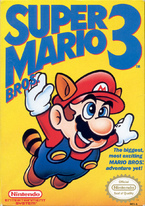
|
Super Mario Bros. 3 (also known by the abbreviation SMB3) is a platform adventure game for the Nintendo Entertainment System. It was released in Japan on October 23, 1988; in North America on February 12, 1990; and in Europe on August 29, 1991. It was later released in the US on the Wii's Virtual Console on November 5, 2007. It is the sequel to Japanese version of Super Mario Bros. 2, although outside of Japan, it is considered the sequel to the Americanized Super Mario Bros. 2.
|
?I think?
This stalking thing actually works on ME so maybe it will on you.

Give credit to Ralphfan

Evil Obama?
My Birthday
My birthday is in August 11 2010 2:00:00 PST.
Once again, give credit to Ralphfan
Piccys of Users
I'm practicing on making piccys of users! Give credit
Xzelion
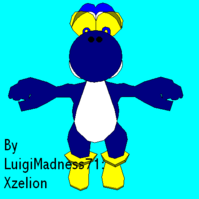
Friend Userbox
If you need my friend userbox just take this
|-
|
Code:
{{userbox|border=#00FF00|mainbkgd=#66FF66|codebkgd=#00FF00|codecolor=#000000|code=[[File:146. Dark Pigarithm Card.JPG|50px]]|msg=This user is friends with '''[[User:LuigiMadness71|LuigiMadness71]]''', the professional [[Pigarithm]] hunter}}
My Pets
Sonic?
Apparently, I am the Sonic character...
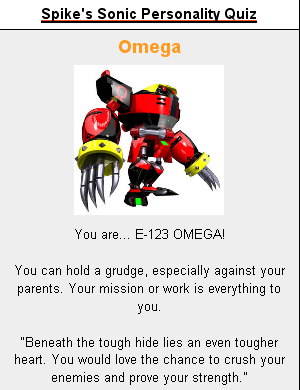
The discription is true. REALLY!
|